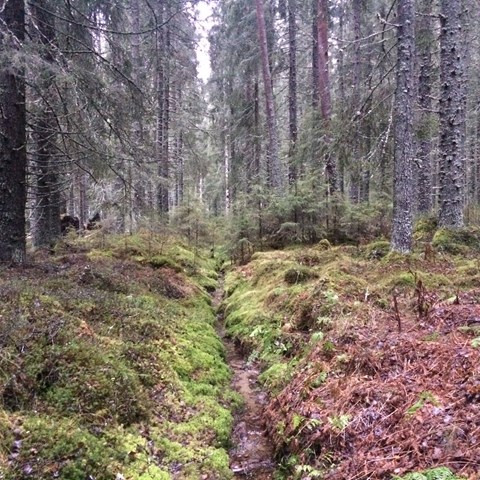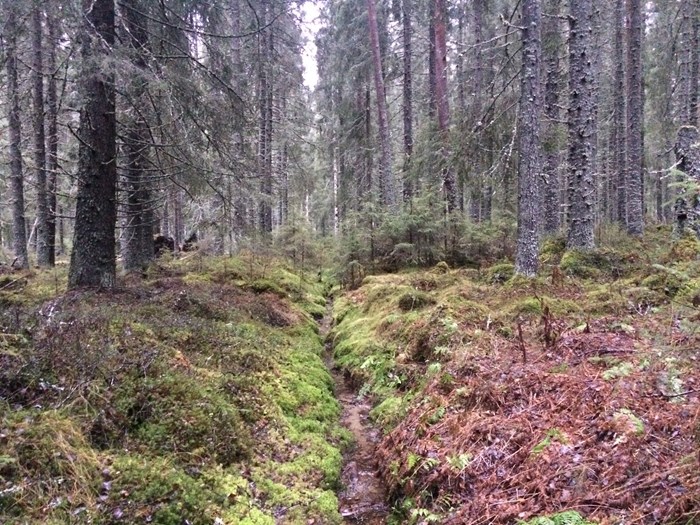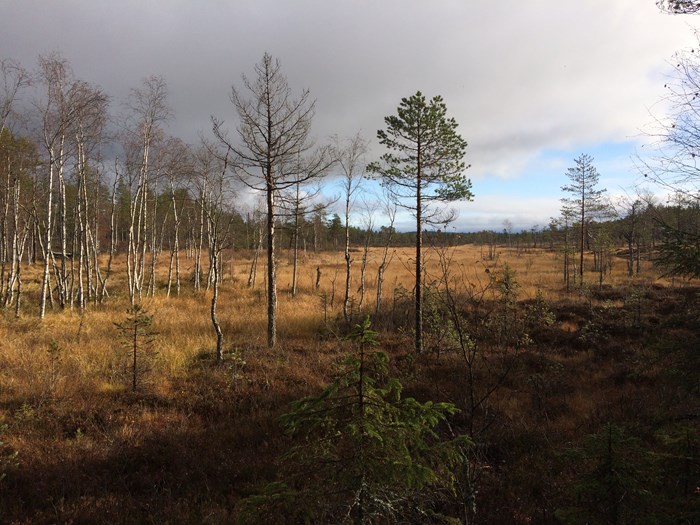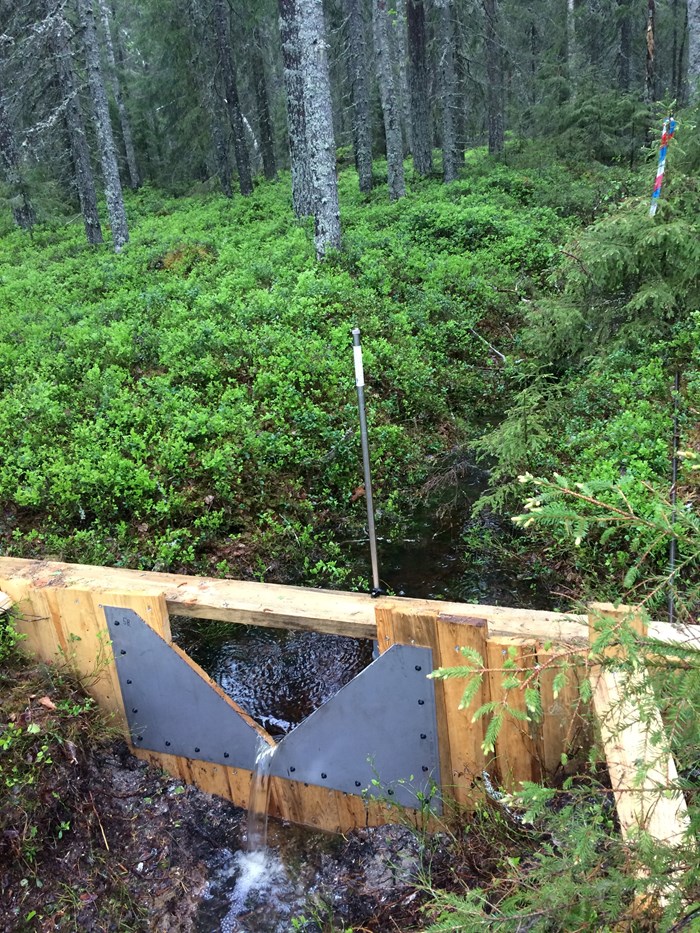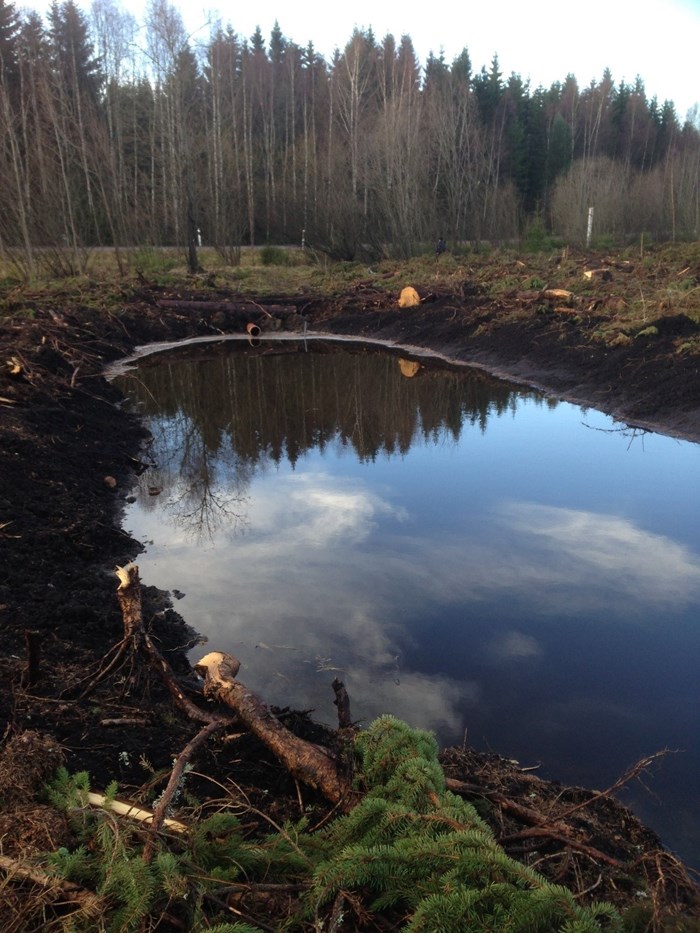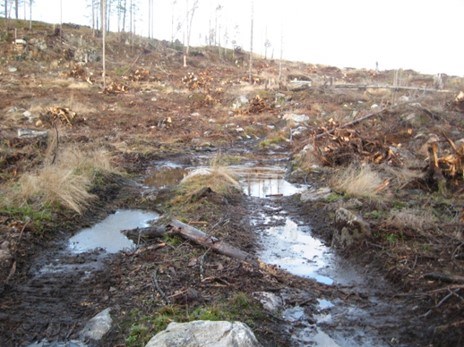Background
Drained peatlands make up a substantial share of Sweden's productive forest land.
In order to keep the areas as productive forest land, the ditches must be cleaned to maintain effective drainage when vegetation and sediments accumulates in the ditch beds. However, ditch cleaning can affect soils, water quality and carbon balance. Increased runoff of total mercury and methyl-mercury has been identified as a potential risk after ditch cleaning.
One alternative is to reduce draining capacity and restore wetland conditions. Wetland restoration is encouraged from a political level to reduce flooding and droughts as well as greenhouse gas emissions. However, as wetland restoration cause flooding of peat soils, it may promote the microbial formation of methyl-mercury.
Aim
The project aims to answer the following research questions:
- Will the concentrations and loads of total and methyl-mercury increase in ditch water after ditch cleaning and wetland restoration, and for how long will these potentially elevated values last?
- Are potentially elevated concentrations of total and methyl-mercury after ditch cleaning mainly associated with particle or dissolved fractions of mercury?
- How does forest machinery driving during ditch cleaning operations influence the hydrological connectivity in the near-ditch zone?
- Will sediment traps/ponds intended to improve water quality downstream work as mercury methylation hotspots, and will methyl-mercury formation be particularly elevated in areas draining acid sulfate soils?
- What catchments will release more or less total and methyl-mercury after ditch cleaning?
Finally, this project will synthesize the results from this study with other published literature, in order to evaluate risks of ditch cleaning on total and methyl-mercury and in what types of areas restoration is preferable. The synthesis will also consider forest productivity as ditch cleaning is done to support forest production.
Results from the project are useful for balancing pros and cons of ditch cleaning and wetland restoration and improve forest water protection guidelines.
Methods
Trollberget is a state-of-the-art research field site that is a part of the Krycklan research infrastructure.
We will sample total and methyl-mercury concentrations and loads from catchments that will either be forest harvested and ditch cleaned (n=2), only forest harvested (n=2), restored wetlands (n=2), pristine references (n=2) and historically drained in the 1930s and then left alone (n=2) using a Before–After Control-Impact (BACI) design.
The BACI design is a powerful experimental design for environmental impact studies to statistically isolate the effect of the various treatments from natural variability. The monitoring of the catchments started in the autumn of 2018 and the forest harvest and wetland restoration will take place in 2020 and ditch cleaning will be conducted in 2021. The sampling of mercury in Trollberget will continue until 2023.
The synoptic study will evaluate how catchments with different characteristics differ in their release of total and methyl-mercury in response to ditch cleaning. The study will involve around 50 catchments sampled on 3 occasions. The sampling setup will include recently and less recently cleaned ditches, low sulfur to acid sulfide soils and references, historical drained but not ditch cleaned.
